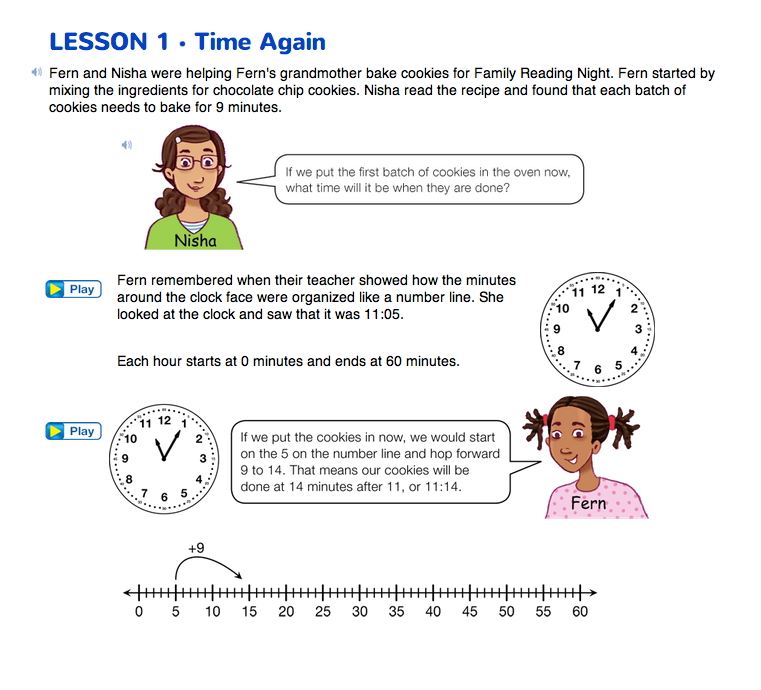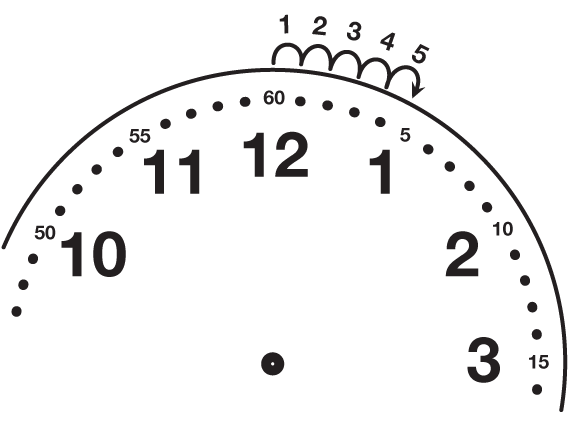Time Again
Est. Class Sessions: 1Developing the Lesson
Part 1. Time to the Nearest Minute
Use the Minute Hand. For this activity each student will need an individual clock. Begin by reviewing the position of the hour and minute hand for various times of the day. Ask students to set the hands of their individual clocks as you model on the demonstration or teaching clock. Begin by showing times in which the minutes are multiples of five; for example, 1:20 or 3:45.
The following prompts provide a model for the class discussion:
Continue to practice with times where the minutes are multiples of 5 until students are comfortable.
Then ask:
Set the demonstration clock to show 12:00.
Slowly move the minute hand to show 12:01 and ask:
Set the demonstration clock to show several more times; for example, 4:34, 11:07, 7:16, and 10:27.
Ask students to show these times on their individual clocks. For each time ask:
Have students count the minutes from 4:00 to 4:34 by first counting to thirty by 5s (5, 10, 15, 20, 25, 30) and then to 34 by 1s (31, 32, 33, 34). Repeat this with the other times.
Use the Number Line to Tell Time to the Nearest Minute. Direct students to the Time Again pages in the Student Guide. Read the vignette about Fern and Nisha together. After reading the vignette, ask the students to use their individual clocks to show the time Nisha and Fern put the first batch of cookies in the oven (11:05) and then to slowly move the minute hand on their clock forward 9 minutes.
Ask:
Ask students to complete Questions 1–2 in the Student Guide with a partner. As they are working, ask them to explain their answers. In Question 2C, students are asked to decide what time to take cookies out of the oven. The cookies take 13 minutes to bake and were put into the oven at 11:47. Students should see that the cookies will be done at 12:00.
After completing these pages, students can practice telling time to the nearest minute by completing the Time to the Nearest Minute page in the Student Activity Book.














